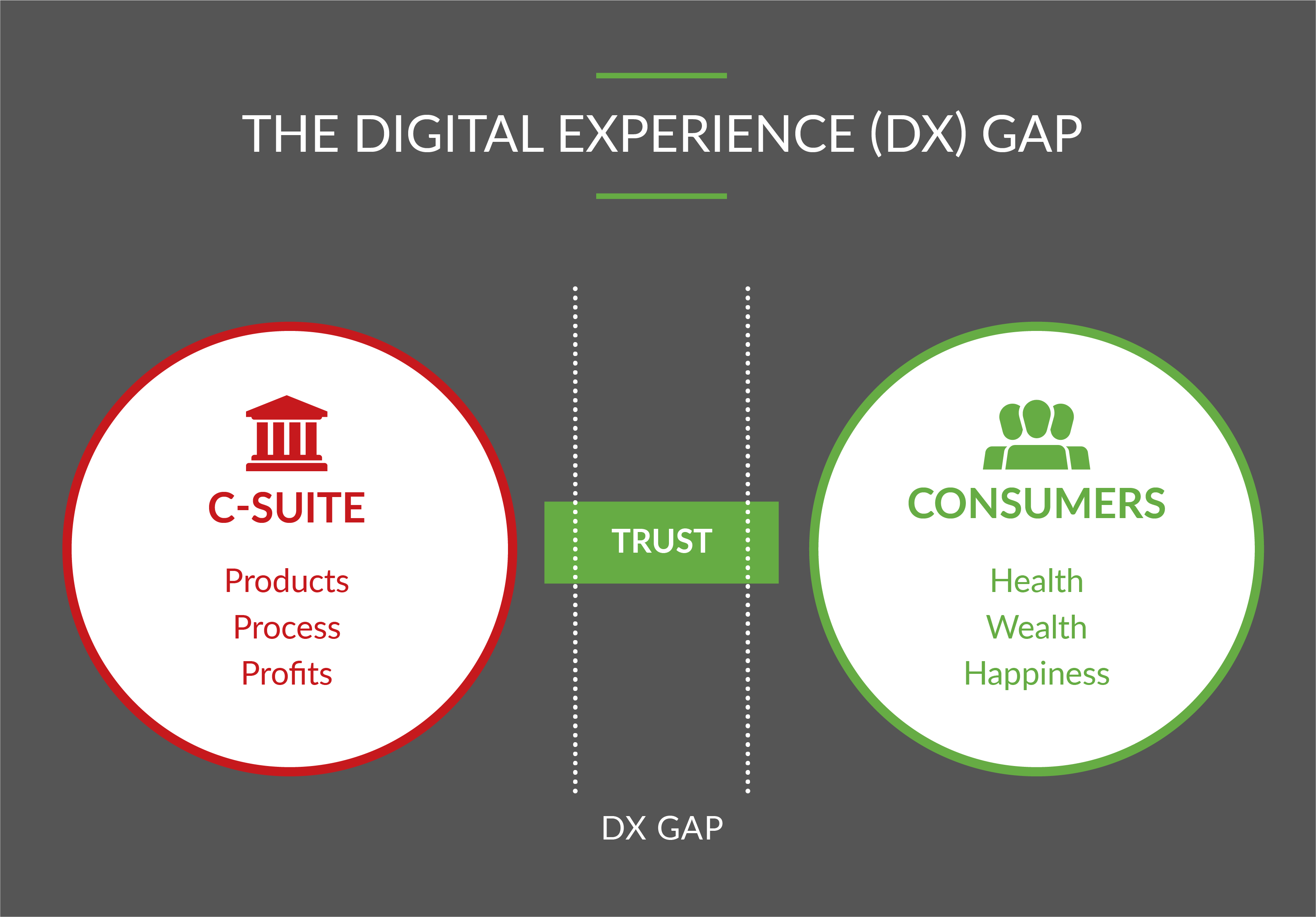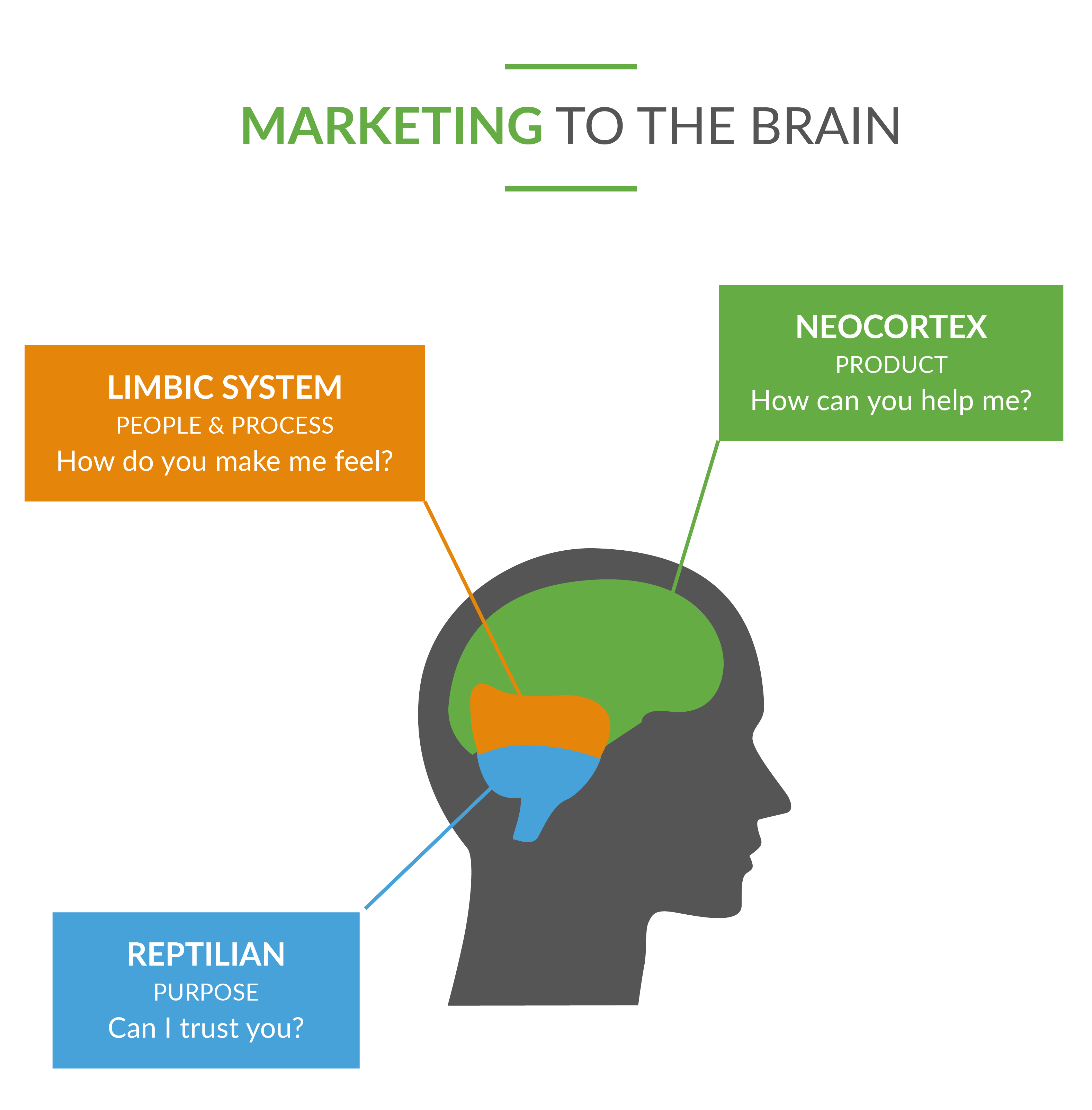Spend five minutes studying the financial industry and you’ll spot it right away: there is a lack of trust between consumers and financial brands. Dig a little deeper and you’ll find out why.
You see, financial brand leaders are driven by the Three Ps: products, process, and profits. Consumers, however, are driven by totally different factors: health, wealth, and happiness.

These two sets of drivers are so misaligned that conflict is bound to arise. That misalignment and the resulting conflict is what leads to a lack of trust on the consumer’s part. They don’t feel like financial brands truly want to help them achieve health, wealth, and happiness.
This raises an important question: is it possible to bridge the consumer-trust gap and help provide the health, wealth, and happiness your customers want without sacrificing your products, process, or profits? Or is that misalignment impossible to rectify?
It is possible to bridge that gap, with purpose and empathy. With purpose, you send the message that you care about more than just profits, and with empathy, you can better understand and address consumers’ needs. Both are key for bridging the consumer-bank trust gap, which can generate more profits in the long run for financial brands, not less.
Before you can begin bridging the gap, you need to know why trust and empathy are so effective. To do that, you must understand how the brain works. From there, I’ll show you how to use these twin forces to establish and maintain strong, trusting relationships with customers.
Understanding the Consumer’s Brain
There are three main parts to the brain. There’s the neocortex, which is the “thinking brain,” where logic and reason reside. Then there is the limbic system, which is the “feelings brain,” where emotion lives and memories are stored. Finally, there is the “reptilian brain,” which is what we depend on for survival.
From a banking perspective, when your marketing messages are communicating to consumers about your financial brand’s great rates, amazing service, and commoditized laundry lists of look-alike product features, you’re very much speaking to their neocortex or “thinking brain.”
The problem? Every financial brand is communicating to the thinking brain. As a result, the average consumer’s brain is overloaded with this type of information. You don’t stand a chance of standing out amongst all the noise in their thinking brain.
The opportunity for you is to step back, transform your marketing and sales communication strategies, and speak into the other two parts of the brain first.
Trust is formed in these parts of the brain. The first layer of trust is formed in the reptilian brain, which completes a binary friend-vs.-foe assessment, and the second layer of trust is developed in the feelings brain, which builds relationships. So if you want to bridge the trust gap, you must speak to these other two parts of the brain.
Purpose Beyond Profits: Tap into the Reptilian Brain
To bridge the consumer trust gap, you need to start with messages targeted at the reptilian brain. This part of the brain is all about survival—fight or flight, friend or foe. It’s the part of the consumer’s brain that decides whether they can trust your financial brand in a broad, binary sense. 
Purpose is the key to tapping into the reptilian brain and earning that trust. Consumers are looking for someone they can trust to guide them to a bigger, better, and brighter future. If your only purpose is profits, consumers will assume that you do not have their best interests at heart and are only interested in their money. Their reptilian brain will shout, “Foe!”
When you have a purpose beyond profits—especially if it’s a purpose consumers can believe in themselves—you transform consumers’ perspective of your financial brand. The consumer’s inner reptile is less likely to shout “foe” and more likely to instinctively label you as “friend.”
Positioning around a purpose that transcends the promotion of commoditized products can absolutely generate revenue. Put simply, purpose is the path toward bigger profits.
In fact, a growing number of leaders, including some guiding very big brands like Costco, Trader Joe’s, REI, and Whole Foods, are championing what they call conscious capitalism—building companies based on the idea their business is about more than just making a profit.
According to Entrepreneur magazine, conscious capitalism–inspired companies are outperforming the market by a factor of 10½ and are even beating “Good to Great” companies (classified as such based on Jim Collins’s book of the same name) like Fannie Mae and Walgreens by 300 percent.
Purpose alone can go a long way to bridging the consumer trust gap, but it’s even more powerful when combined with empathy, which is found in the feelings brain.
Empathy Is Everything: Unlock the “Feelings Brain”
Empathy is defined as “the ability to understand and share the feelings of another.” Empathy is a key part of the limbic system, or the “feelings brain,” which is where relationships are formed, and both memories and experiences are stored.
If the primary question the reptilian brain asks is, “Can I trust you?,” the question being asked by the consumer’s limbic system is, “How do you make me feel?”
As a financial brand, when you operate from empathy, you understand that everything is about the consumer, not you. What are their needs, problems, and dreams, and how can you help them? In today’s digital world, empathy is perhaps the most important competitive advantage a financial brand can have. It tells the consumer: We see you, and we understand how you feel.
How you make the consumer feel will be determined by how well you utilize empathy, leveraging your understanding of the emotional needs of people within the communities you serve and the process through which you emotionally connect with them.
Let’s return to that all-important P: profit. What exactly is the value in creating an emotional connection with customers? In Motista’s report Making the Emotional Connection of Financial Services, we see that an emotionally connected account holder creates between 30-100% more value for a brand than just a “highly satisfied” account holder. Motista also found that emotionally connected account holders, established through purpose and empathy, resulted in a 6X multiplier of lifetime value.
When you make a positive emotional connection with a consumer through empathy, you demonstrate that you care about them, which helps create a relationship and inspires loyalty, which means more profits in the long run.
Winning over the Hearts and Minds of Consumers
Financial brand leaders are often left-brain thinkers relying heavily on fact and reason. This is probably a very good thing for someone dealing with people’s money!
However, you must not lose sight of the fact that consumers often view the world through right-brain thinking, driven primarily by feelings and emotions. Consumers often buy with the heart, not just the mind.
To most effectively attract consumers, you must win over both their hearts and their minds. That means tapping into the reptilian brain and the “feelings brain,” which you do through purpose and empathy.
With purpose and empathy, you can bridge the bank-consumer trust gap, leading consumers to fall in love with and commit to your financial brand. In this way, you can help consumers achieve their goals of health, wealth, and happiness, while also generating more profits. Win-win!
This article was originally published on July 1, 2020. All content © 2024 by Digital Growth Institute and may not be reproduced by any means without permission.





